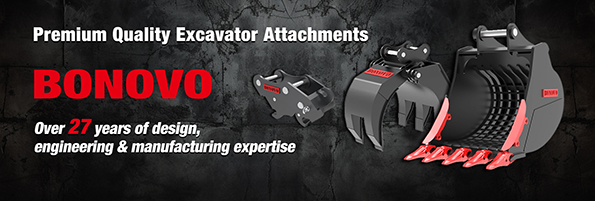(1) The length of the fork teeth is adapted
The length of the wood varies from several meters to more than ten meters. For shorter wood, such as building wood, the length is more than 3-6 meters, the choice of fork length moderate clamping fork can be. This kind of clamping fork fork teeth are usually 2-4 meters, can be stable clamping wood, easy to handle and load and unload. In the wood handling scene of small construction sites, the clamping fork suitable for short wood can flexibly shuttle through narrow Spaces, efficiently complete the operation, and meet the demand of "small construction site short wood handling clamping fork". For long wood, like forestry logs, the length is often more than 8 meters, and it is necessary to be equipped with a long fork fork, and the fork length is generally 6-8 meters, or even longer. The long fork teeth can be deep from both ends of the wood to ensure that the wood does not slip during the handling process and achieve the accurate matching of the "forestry long log handling fork".
(2) fork spacing adjustment
The thickness of the wood is different, and the diameter is from ten centimeters to several meters. For fine wood, such as small wood, the diameter is more than 10-30 cm, the wood fork fork spacing needs to be small, generally 15-35 cm, close spacing can prevent the fine wood from shaking or falling during the clamping process, suitable for "small wood handling wood fork fork spacing" requirements. On the contrary, for rough wood, such as large logs, with a diameter of more than 50 cm, the clamping fork needs to have adjustable large spacing forks, and the spacing can be extended to 60-80 cm to adapt to the size of the rough wood, achieve stable clamping, and meet the needs of "large log handling clamping fork fork spacing adjustment".
Second, combined with the weight of wood to determine the bearing capacity of the fork
(A) Light wood corresponding to light wood fork
Light wood, such as some light softwood, may weigh tens to hundreds of kilograms per unit. This kind of wood handling can choose a light wood fork with a low carrying capacity, and its rated carrying capacity is generally 0.5-2 tons. When handling light wood raw materials in furniture manufacturing enterprises, the light wood fork is flexible in operation, can be quickly loaded and unloaded, and can meet the needs of "furniture manufacturing enterprises light wood handling wood fork" and improve production efficiency.
(2) Heavy wood needs heavy wood fork
Heavy wood, such as rosewood, sandalwood and other hardwoods, can weigh several tons per root. The handling of such wood must use heavy wood forks, whose carrying capacity is usually 5-10 tons, or even higher. When processing heavy hardwood in a large wood processing plant, the heavy wood fork can easily lift the wood with its strong carrying capacity, ensuring the smooth operation and meeting the requirements of "heavy hardwood handling fork in a large wood processing plant".
Three, comprehensive consideration of size and weight selection points
(A) multi-specification wood fork suitable for diversified operations
In the actual wood handling, the size and weight of wood are not single and fixed, and different specifications of wood may exist at the same time. At this time, it is more advantageous to choose a wood fork with a variety of fork lengths, adjustable spacing and a wide range of bearing capacity. The fork can be flexibly switched between different wood handling requirements, and is suitable for the "multi-specification wood handling fork" scenario, avoiding frequent equipment replacement and improving work efficiency.
(2) Safety factor reservation
Regardless of the size and weight of the wood, a certain safety factor should be reserved when selecting the wood fork. In actual operation, the weight of wood may increase due to factors such as water content, and there may be errors in dimensional measurement. Therefore, the loading capacity of the fork should be slightly higher than the estimated maximum weight of the wood, and the adjustment range of the fork length and spacing should also appropriately exceed the estimated maximum size of the wood, so as to ensure that the fork can work safely and stably under various complex circumstances, and meet the requirements of "safe operation selection of the fork".
The precise selection of the excavator fork according to the size and weight of the wood can ensure the best performance of the fork in the wood handling operation, improve the safety and efficiency of the operation, and reduce the equipment loss and operating costs. In the wood handling industry, only by fully considering these factors can we achieve the perfect match between equipment and operation needs.
According to the size and weight of wood, precise selection of excavator wood fork
- BONOVO
- Counselor
- Posts: 645
- Joined: Oct 17th, '24, 02:50
- Location: China
According to the size and weight of wood, precise selection of excavator wood fork
Choose BONOVO for high-quality, customizable brush cutters for skid steers with fast delivery. Contact us today to discover how our superior products can enhance your land management tasks!
for more info just visit our website at www.bonovogroup.com
contact # : +86 158 6218 2088
email : sales@bonovogroup.com
for more info just visit our website at www.bonovogroup.com
contact # : +86 158 6218 2088
email : sales@bonovogroup.com

